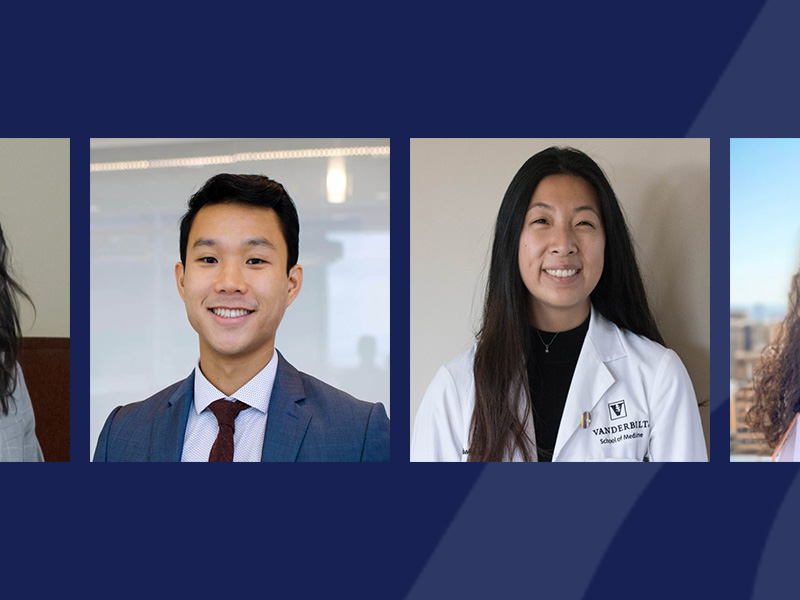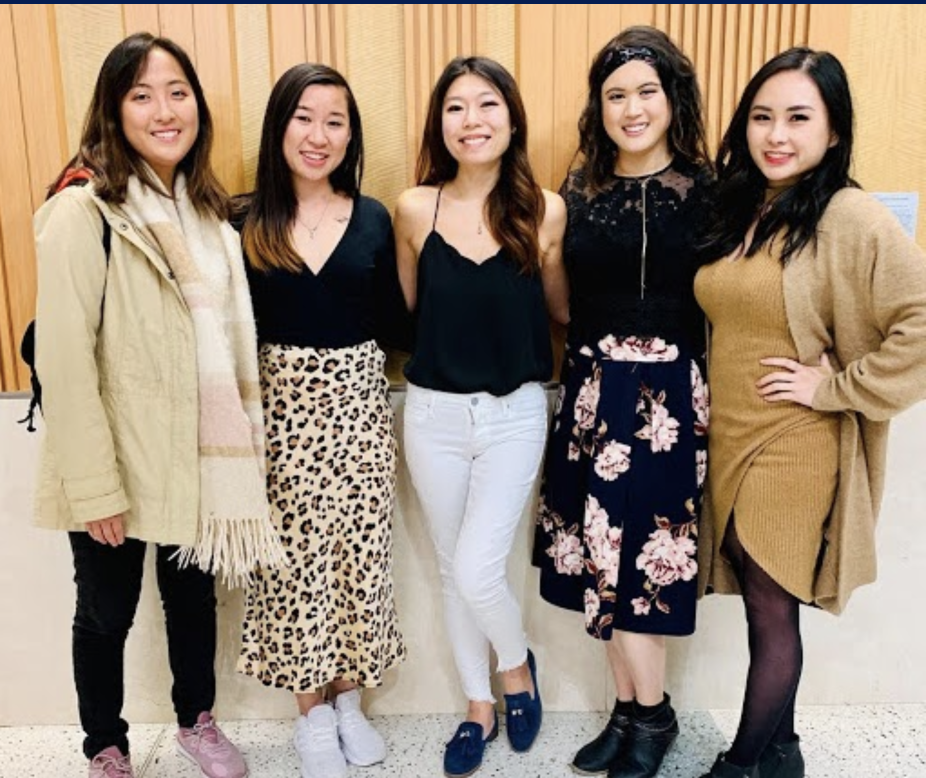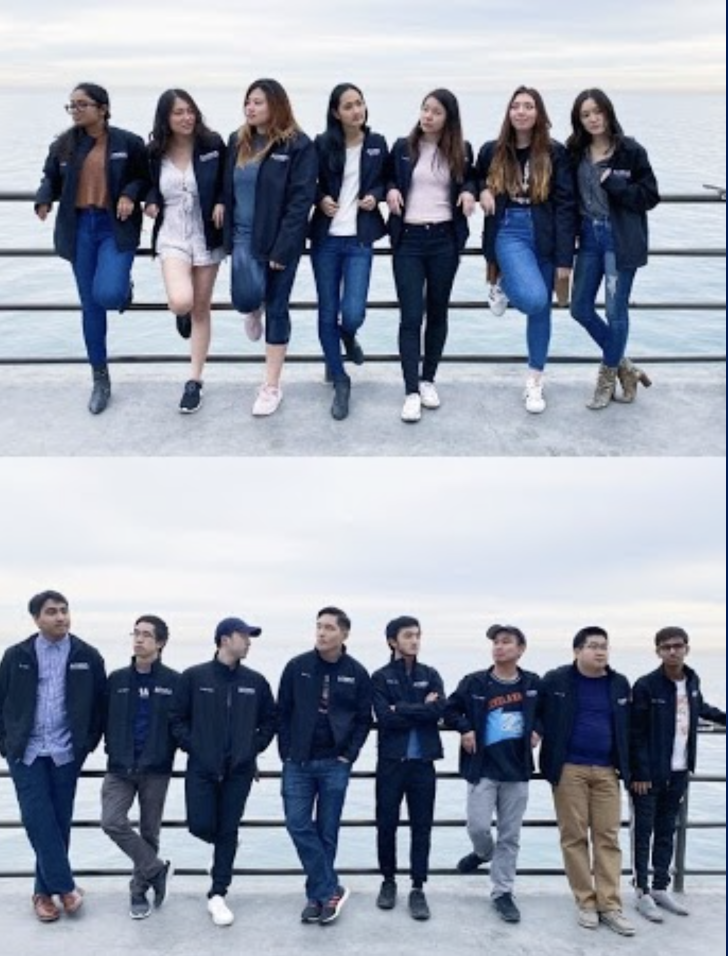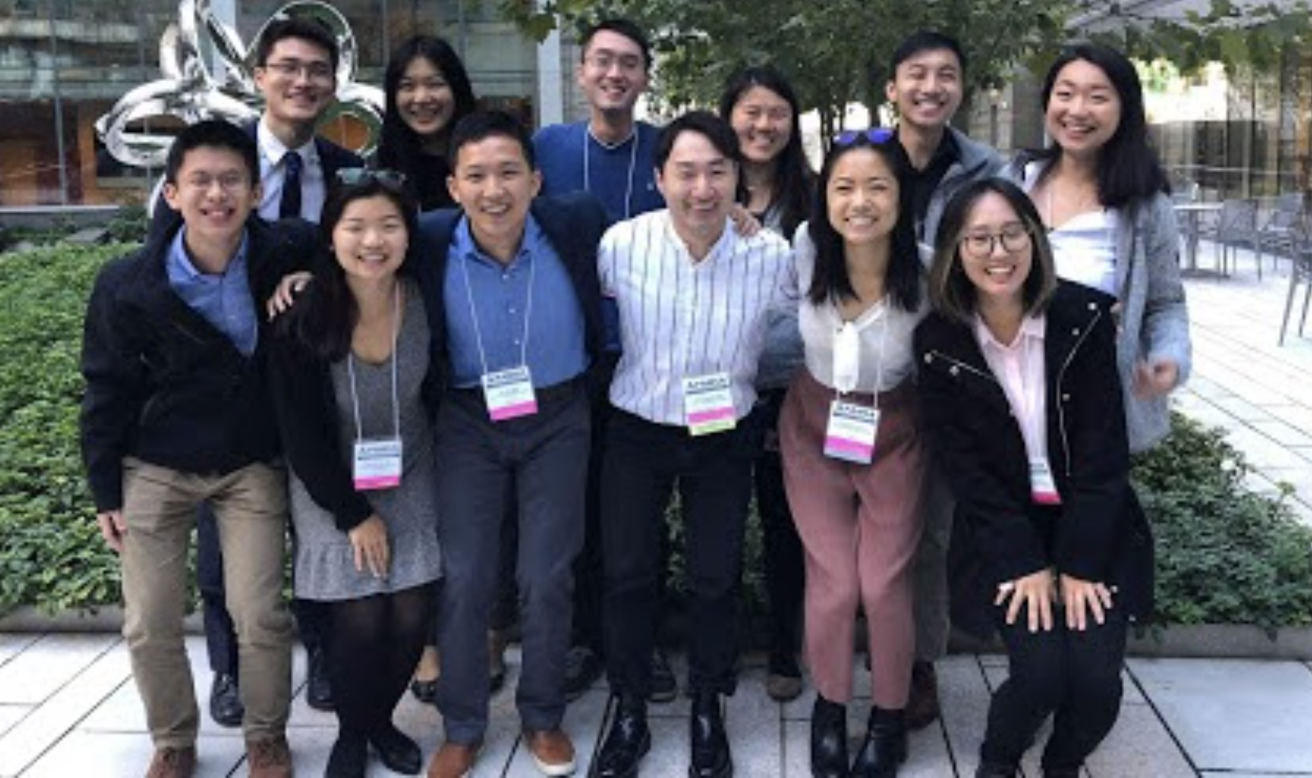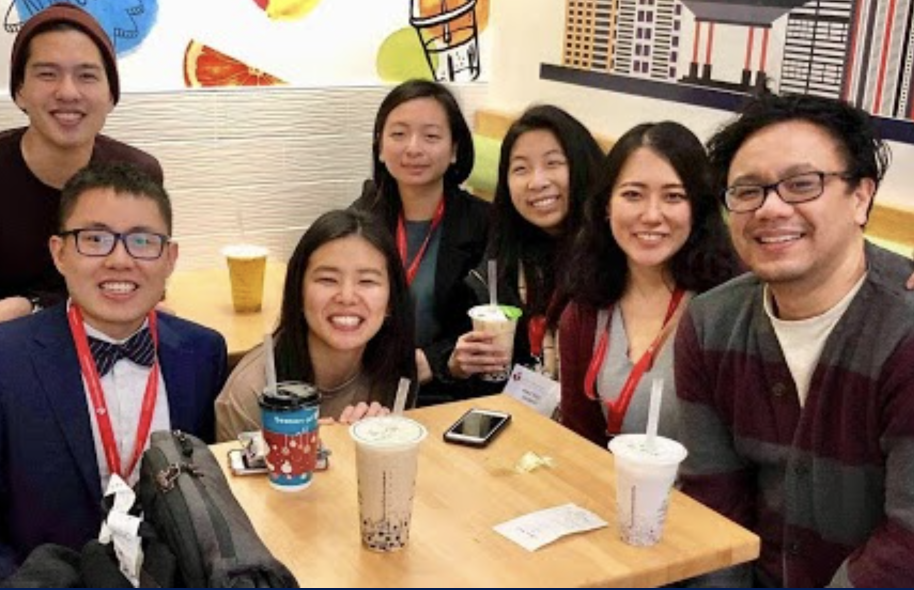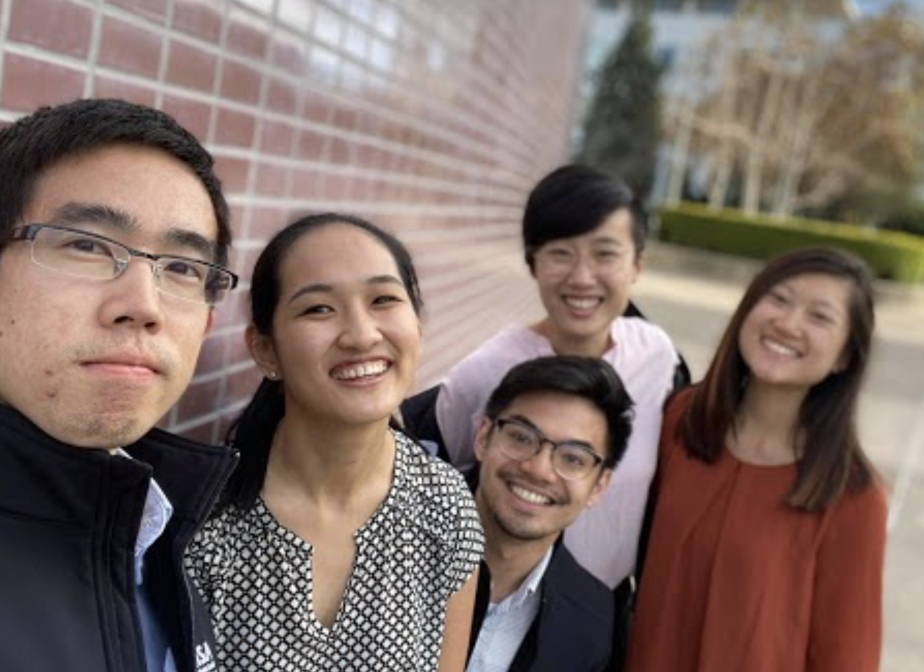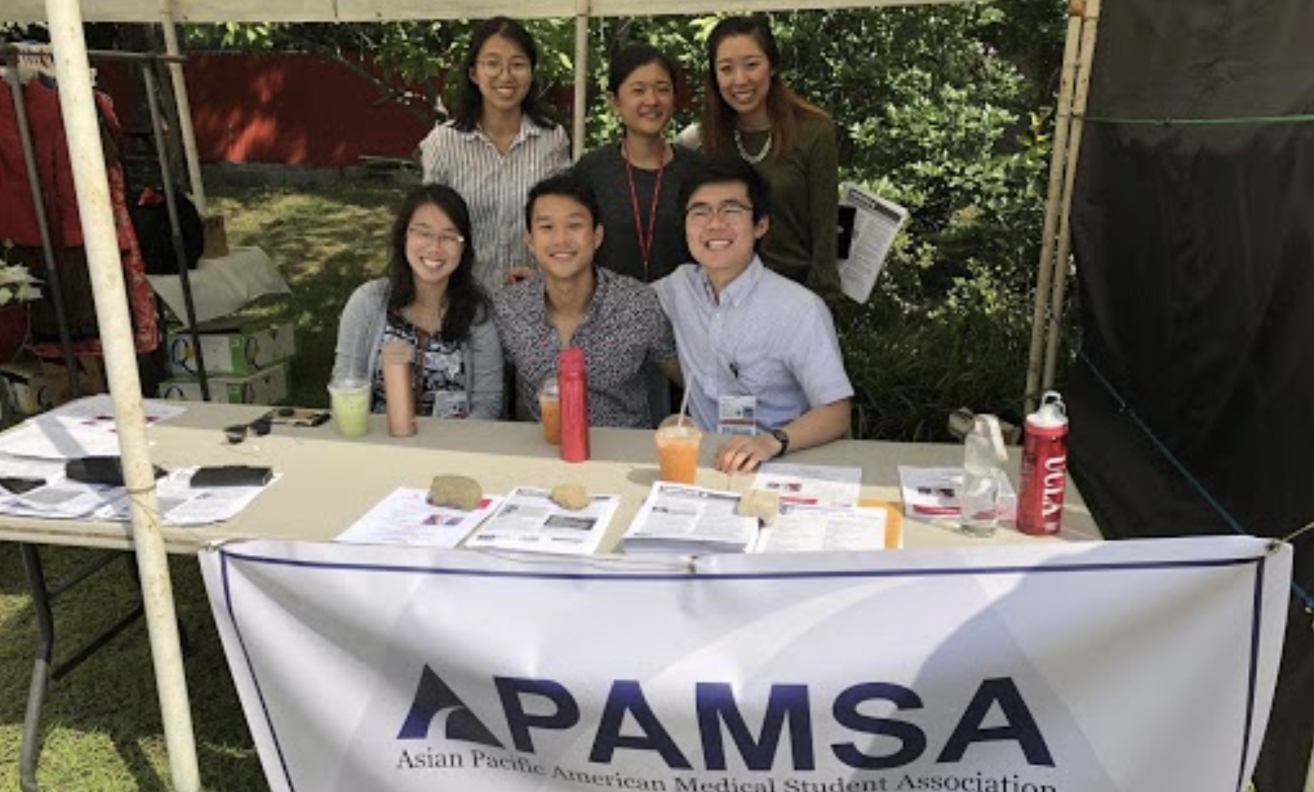Kimberly S. G. Chang, MD, MPH
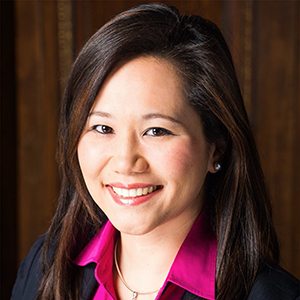
Year: 2020
Dr. Kimberly S.G. Chang, MD, MPH, a family physician at Asian Health Services in Oakland, California, and vice speaker of the house on the board of directors for the National Association of Community Health Centers.
I’m a family doctor at Asian Health Services [AHS], and have been working here since I finished residency in 2002. I was born and raised in Honolulu, Hawai’i. Right now I’m seeing patients part time and part time as a healthcare policy fellow at AHS – a position that we created so I could continue my policy work.
I focus on human trafficking and the healthcare intersections of that…but the broader issue is health equity and fighting for marginalized, disenfranchised populations, for their healthcare, for their equitable ability to prosper and succeed in our society. Health is a symptom of larger social problems and dislocations, and how social problems present in people’s lives is at the core of health equity and public health.
When I first started at AHS, one of my clinical responsibilities was at the Teen Clinic. We were seeing a lot of commercially sexually exploited minors – teenagers – in the Teen Clinic in 2003. And we didn’t really know what to do about these issues, what to do about these kids who were being sold for sexual services in Oakland. We didn’t have the terminology or the language. And societally, we didn’t really know what to do with it either. There was no definition for this – we used to call it “child prostitution.” Now we know that there is no such thing as “child prostitution” – anyone under the age of 18 years exchanging sexual acts for something of value is a victim of human trafficking.
Federal legislation to define human trafficking passed only 2 years before, in 2000, and policy can take a while to translate into practice. So we were seeing this on the frontline – seeing drug use, mental health problems – but… there was really nothing we could do except through the criminal justice system. We tried reporting to Child Protective Services, but because it wasn’t a caregiver perpetrating the abuse, there wasn’t anything they could do, and they referred us to the police. But the police would ask…do these kids want to report it, and they didn’t. So there was really no space where this was being addressed… What you see is a disconnect between federal and state legislation, about these definitions – of these kids as victims.
AHS started Banteay Srei as a youth development program for these youth- we were saying this is not just a medical issue. But we also needed providers to be aware, so we created a screening protocol to make sure we were catching these patients, so we could intervene, hopefully early, or even prevent exploitation and trauma.
There was a patient I saw in 2008 who ended up being really really sick and she was hospitalized for 2 months, but she really didn’t want to go to the hospital – she said she would rather die than go back to jail. That was really an “aha” moment for me, because I realized we could do all the services, all the screenings, but that was all just clinical… what were we really doing for these kids, what were they facing? How could we change the way the structures were built, change the way the systems operated, so that the youth were not afraid of systems that care and protection. I ended up getting introduced to the Director of the National Center on the Prosectution of Child Abuse from the National District Attorneys Association in Washington, D.C., and I presented all these case studies of patients I saw, saying “these kids are terrified of law enforcement, what’s going on, what can we do?”
Advocacy is a lot of media advocacy, communication, building awareness… in 2011, we got the New York Times interested in this and they did an article, looking at our programs, and how we’re seeing this as abuse, not sex work, and this is a problem for youth in our community.
So all of this really comes out of my clinical work, and based out of real people and their life experiences – patients we’ve cared for at AHS.
I mean think about it – who has eyes on what’s really going on in the community? A mentor told me this: it’s teachers because kids come to school and repeat what parents are saying in the home, pastors because they take these confessionals, and clinicians because people are sharing all of their vulnerabilities, issues, barriers affecting them and their health. If we really pay attention to our patients, not just the really narrow medical piece – but what’s really going on in their lives, the conditions creating illness and disease, you have a whole, fertile ground on which you can provide information to influence policy. That’s very powerful.
I work at Asian Health Services so I see everything through the lens of AAPI identity and experiences. I grew up in Honolulu, a majority minority state, and I didn’t really get that this was different, I was different – I just thought I was normal. I went to college in New York, at Columbia, and that was a bit more eye opening. People have ideas about who you are and how you should be, and cultural stereotypes. And that kind of opened my eyes. I went back to the University of Hawai’i for medical school, so I went back home, back to a majority AAPI location, and it was comfortable – easier to be just myself without having to worry about how people think of me. You know, there’s a tax when you’re a minority – you have to filter information through this lens, and it takes a lot of energy, and that energy could be better used and spent solving problems than trying to figure out how people see you. It’s the same thing with UCSF, where I went to residency – there’s a lot more awareness, and the mission was to serve vulnerable patients, which resonated with me.
My goal at the end of finishing residency was caring for disenfranchised patients, minorities, patients, who are vulnerable, so I wanted to see a wide variety of patients. I worked in a variety of settings after residency, and AHS was one of them. I felt like I could do more, and focus more on the patients, at Asian Health Services. Part of that was the cultural tax. AHS is very comfortable for me; even though I don’t speak fluently in another language, I think there’s an affinity with patients, of all Asian background, that we have with each other. And I think that helped with the healthcare.
I took a year off from 2014-2015 to do a Minority Health Policy Fellowship at Harvard, and this was kind of a mid career switch, and I had already worked for 10 years and directed the Frank Kiang Medical Center. Some of the personal challenges I’ve faced were coming to this awareness about systematic and structural and internalized barriers. I think for me, it was very easy to just focus on grades, school, and you’re supposed to succeed if you just follow the rules. But that’s not necessarily true – there’s a lot of Asian Americans in medicine, but if you look at the professors, deans, NIH research awards, grant awards and foundation leaders – it’s very small. Why is that?… it’s because you have to have these social connections, social capital, and it’s not just about following the rules and getting good grades. It’s about networking, lifting others up, having others lift you up, getting noticed – and sometimes, we don’t get noticed because there’s some stereotypes about Asians… A lot of times, culturally, we’re very community and family oriented – you have to make sure that everyone is doing well, not just yourself.
…The structures that we’re placed in, sometimes it’s not like that – it’s very competitive, it’s very “me or you,” and so those kinds of structures may not be conducive to promotions or things for Asians. And that’s important because these sorts of structural barriers mean less resources for underserved Asians, less opportunities, less attention to the problems faced by refugees, immigrants of Asian descent. So that’s how my personal challenges translate societally. If I am going to be a good advocate for my patients, if I can use my privilege and power effectively, I better know what the barriers are, because if I don’t at least recognize them, how would someone with much less privilege be able to overcome them?
Help each other, support each other – it’s not a “me vs. you,” it’s about you helping your colleagues and there’s an understanding that at some point they might be able to help you. The currency right now is how many groups or networks you’re a part of – information is the currency. So as many different types of groups that you’re a part of and you can get information from or contribute to, that adds to your work. Give opportunities to each other.
Look at community organizing. Advocacy is not about being the boss – it’s about the issue. What can you do to move the issue forward? Sometimes that means being the leader, and sometimes that means taking a backseat. Always keep the goal of moving the issue forward as the main priority, not your own position, not your own success. If you do this, then you will be successful.
Be intersectional – advocacy looking at other minority issues, other underserved/vulnerable populations issues – not just strictly AAPI issues. What other communities have faced and learned can be applicable to us and vice versa. Make allies.
I’m still doing human trafficking policy work – I was appointed to the National Advisory Committee on the Sex Trafficking of Children and Youth in the United States, and that’s a way to make recommendations to Congress, state Governors, and Child Welfare departments
and offices across the nation on this issue. I was elected as the vice speaker of the House for the National Association of Community Health Centers; it’s so eye opening to learn about the issues facing communities across the country – like the opioid crisis facing our partners in Kentucky and Ohio, and rural workforce challenges, among others – and I’m so proud to be working in the community health center movement.
I’m on LinkedIn and Twitter (though I’m not super active).
APAMSA Interim Executive Board Feature
Happy August, APAMSA! This month, we will be featuring our interim executive board members, who will be serving in this capacity until the 2021 National Conference elections.
-
Interim President: Donna Tran, M3 at Michigan State University College of Human Medicine
-
Interim Advocacy Vice President: Leena Yin, M3 at University of California, San Francisco
-
Interim Membership Vice Presidents: Sai Mupparaju, M3 at Sidney Kimmel Medical College; Jonathan Weng, M2 at NYU Grossman School Of Medicine; Rachel Chang, M3 at Vanderbilt SOM
-
Interim Health Affairs Vice President: John Yuen, G2 at Renaissance School of Medicine at Stony Brook University
This passionate and hardworking group is excited to serve you all! Here, you can read about their favorite APAMSA memories, how they became involved, and their vision for our organization.
Questions? Contact Ryan at communications@apamsa.org.
- Your favorite APAMSA memory:
Donna: During my undergrad at UC Davis, I was actively involved with a Vietnamese Asian American org called VN CARES and that experience sparked my passion for serving vulnerable APIA communities. I knew in medical school I wanted to rekindle my experience in meeting other like-minded APIA individuals who also wanted to better their communities and the world. I literally Googled “Asian medical student association” and found APAMSA. After I joined MSU’s local APAMSA, the rest was history 😉
Leena: I joined my local chapter upon entering medical school, then started getting involved with national advocacy while coordinating our local efforts organizing against the Trump administration’s public charge rule (which has a temporary nationwide injunction, by the way!). Our chapter ended up winning Best Chapter in Advocacy that year, so I traveled to National Conference to accept the reward and also run for Health Advocacy Director. I knew I’d made the right decision when I met all the dope people on National Board!
Jonathan: Upon starting medical school, I quickly met and befriended members of my local chapter. In October, NYU auspiciously hosted the National Conference, during which I became more familiar with the vision, structure, and leadership of national APAMSA. Applying for a Regional Director position post-conference proved to be one of the best decisions of my first year, and I am honored to now serve in this interim capacity.
Sai: I became involved with APAMSA after attending the National Conference in 2019. I was curious about this amazing group and jumped right in as one of the Region 3 Regional Directors!
Rachel: I first became involved through my local APAMSA chapter at Vanderbilt – as someone who’s lived in California all my life, I found the adjustment to the South a big one in terms of food, people, and culture. I later took on more responsibility as a Region IV director in planning a conference at Vanderbilt to promote awareness of APA/AAPI issues in the South, and as an Advocacy Director in my APAMSA Vanderbilt chapter, I facilitated a resident panel and led an open discussion on microaggressions directed towards Asian and Asian American health care professionals/students. Throughout my two years, I’ve found a community in APAMSA that has transcended my time here at Vanderbilt – whether it’s through connecting with students from other medical schools who I share experiences with as an APA individual in the South, or through reuniting with APAMSA alumni at conferences and back in California.
John: I’ve been involved in APAMSA since I was an undergrad at NYU, where I was a part of the eboard of its newly founded pre-med chapter. I was approached by a couple of friends with the prospect of being actively involved in promoting AAPI health and I couldn’t say no. About six years later, that same sentiment is why I’m still involved with APAMSA.
3. What motivated you to run for your position? What are your plans for your position during your term?
Donna: I ran for Interim President (IP) because I wanted to make meaningful systemic changes with our fellow APAMSA friends during this difficult 2020 year. Running for IP while being EVP/CFO is a big undertaking but with the support of the Executive and National Board, I knew in my heart it was possible. I am humbled and grateful for this opportunity to serve everyone in APAMSA and our APIA communities.
For my term, I hope to help others engage in meaningful virtual activities (like our 2021 virtual National Conference!) while encouraging APIA diversity and leadership development for all our students. Our Executive Board has wonderful ideas to implement and I look forward to supporting everyone. Thank you!
Leena: The Advocacy Branch has only been around for 3 years, but we have a lot of momentum, and it’s clearer than ever that the AAPI healthcare community has a role – and more importantly, a responsibility – to fight for justice in all its forms. So I feel passionately about both pushing APAMSA as an organization to become a national leader in advocacy and empowering our members to learn how to advocate throughout their careers.
Our focus in the next year will be to follow the lead of our professional AAPI health org counterparts in fighting for policies that benefit our communities, share resources and educational opportunities around advocacy for our students, and build solidarity with our peer organizations!
Jonathan: This past year as an RD instilled in me the understanding that the National Board exists to unite and serve our ~130 local chapters across the country. The foundation of APAMSA membership enables all other NB branches to run effectively, from holding conferences and community health events to advocating for the underserved and oppressed (whether AAPI or not) to connecting and inspiring the next generation of physicians who will promote the health of the AAPI community. In all, it is no exaggeration to say that APAMSA membership crucially contributes to bettering the national landscape of AAPI health.
The interim Membership VPs have already begun implementing our vision for APAMSA membership! The most pressing issue involves regrouping our constituent chapters on a local and regional level. We have been seeking to first understand the needs of our chapters in this unusual time before supporting them in helpful and practical ways.
Beyond simply doing damage control, we are taking advantage of this era of virtual learning and communication to connect chapters and hold events that would not normally transpire under a primarily in-person paradigm. The iMVPs are particularly interested in improving regional and national documentation, including recordkeeping of these novel events and structures, for the betterment of future APAMSA members and leaders. We continue to recruit new chapters, especially premed ones, even as we concurrently foster long-term professional and personal relationships between existing members at the local, regional, and national levels.
Finally, we, along with the rest of the Executive Board, are currently in the process of rethinking the structure of APAMSA membership as we aim to steward our ever-growing role in national AAPI health.
Sai: I wanted to help APAMSA have better communication between National and our local chapters. I noticed that oftentimes there was not enough communication and our local chapters were unsure of what National APAMSA was up to. I hope that increasing communication will further promote the family-like feeling APAMSA has.
I also wanted to help spearhead promoting diversity in APAMSA and help increase South Asian, Southeast Asian, and Pacific Islander representation among our membership!
Rachel: As a Region IV Director, I hosted our multi-institutional Region IV conference 20/20: Visualizing Health and Beyond at our own Vanderbilt campus, which featured speakers discussing community health and healthcare for immigrants and refugees, mindfulness and physical health, and mental health in APA communities.
I was motivated to run for interim MVP in order to share my experiences of promoting and fostering awareness on APA issues in schools in the South, compared to those on the Northeast or the West. These regional differences play a huge part in our individual experiences, and meeting the needs of our local chapters necessitates a deep understanding of each region’s interests and capacity. Additionally, I wanted to expand communication between MVPs and RDs, and RDs and local chapter leadership in order to facilitate idea sharing and determining the needs of our chapters. As an interim MVP and with my fellow iMVPs Sai and Jonathan, we have already begun our work in facilitating our virtual regional conferences in light of COVID-19 and holding an RD Town Hall. We are in the process of finalizing a Local Chapter Resources Guide, which we hope to distribute to all local chapters in order to inspire events, gain more familiarity with National Board and its opportunities, and improve transparency on grants and other funding available for chapter events. Finally, we are continuing to recruit new chapters to our APAMSA family.
John: The umbrella of Health Affairs revolves around being engaged in the community and again, is one of the reasons why I love being a part of APASMA. COVID-19 has obviously made it difficult for us to reach our communities. 2020 is perceived as this series of unfortunate events, but I think that with the pandemic and the increased energy our country (and the world) has in tackling injustice and inequity, this is an amazing time for APAMSA’s 120+ chapters to assess the needs of their communities and make concrete steps in meeting them. During my term, I hope to provide all of our chapters with ideas and resources to kickstart (virtual) events this upcoming academic year, starting with putting out a guide to getting more involved in Health Affairs. Additionally, we are planning on working with the Advocacy Branch on items such as voter registration!
4. What are your interests/passions/hobbies? (outside of APAMSA, of course :D)
Donna: Bouldering/rock climbing, Yelp Elite foodie, ocean beach, nerdy TV shows (Doctor Who and Game of Thrones)
Leena: I read a lot of manga and webnovels, drink a lot of boba, and love karaoke (outside of COVID times).
Jonathan: Outside of APAMSA, my interests include playing and listening to music, playing and watching basketball, and studying and practicing theology. I enjoy spending alone time with a book, but there is nothing quite like the company of friends and family. If I were not an aspiring physician, I might have pursued a career in technology, finance, or ministry.
Sai: If COVID were not happening, I would often be found in some hipster cafe, in a dance class, or wandering around Philly. Now, I’m obsessed with doing Chloe Ting workouts, different coffee brews to make at home (and compensate for no cafes), and still dancing around my apartment.
Rachel: I love reading, running, the beach, boba, and watching bad reality TV D:
John: I love watching/playing/breathing basketball, drinking craft beer, and cooking!
Statement on the Detainment of Iranians and Iranian Americans at the Washington-Canada Border
Over the weekend of January 4th, over 60 Iranians and Iranian Americans were detained at Washington State’s border with Canada and subjected to questions about their political views and allegiances, for up to 10 hours. Some were eventually refused entry. As an organization, APAMSA stands with our Iranian siblings and reaffirms our commitment to immigrant rights. The rights of all Americans and immigrants should be respected regardless of Iranian origin or descent.
From Japanese American internment during World War II to hundreds of hate crimes against South Asians/SWANA (Southwest Asian and North African) folks after 9/11, Asian Americans and Pacific Islanders are all too familiar with the othering, scapegoating, and violence that befalls our communities in times of international conflict. No matter who we are or how long our families have been in this country, we have been accused of being foreign, spies, or terrorists. Such accusations are ironic in that 1) they have never been effective for protecting national security – and indeed, are predicated more on racism than safety; 2) from farms to railroads, America was built with the support of our ancestors; and 3) although many of our families migrated here to seek better lives, many were also forced to do so by American interference in our countries of origin.
This is not the first time that immigration officials under the Trump administration have violated due process rights, and these recent actions further reinforce our understanding that despite the 14th Amendment, our citizenship does not protect us and any one of us could be targeted next. In this time of crisis, we encourage chapter leaders to support members who are personally impacted by the current environment, and all APAMSA members to familiarize themselves with the rights of themselves and their patients.
From the Council on American-Islamic Relations (CAIR) community advisory:
If you are visited by federal law enforcement agents, remember:
-
You have the legal right to have a lawyer present when speaking with federal law enforcement agencies. This is true even if you are not a citizen or have been arrested or detained… Refusing to answer questions cannot be held against you and does not imply that you have something to hide. Answering a question incorrectly can hurt you more than not answering at all. An attorney is best able to protect your rights.
-
You do not have to permit any law enforcement officer to enter your home or office if they do not have a warrant… If they say they have a warrant, politely ask to see it before allowing them to enter. If they have a warrant, be courteous and polite, but remember that you are under no obligation to answer questions without a lawyer present. You should tell the agents that you do not consent to the search so that they cannot go beyond what the warrant authorizes.
-
You should never lie or provide false information to any law enforcement agency. Lying to law enforcement agents under any circumstance is a federal crime.
While traveling, remember:
-
TSA/CBP cannot target you for additional screening or questions based on religious, racial, or ethnic profiling.
-
US citizens cannot be denied entry for refusing to answer questions. Green card holders cannot be refused entry, unless their travel was not brief and innocent per USC 1101(a)(14). However, invoking your rights may result in delays.
-
Non-citizen visa holders can be denied entry into the country for refusing to cooperate. If you have concerns, please speak to an attorney.
More legal resources can be found in CAIR’s “Know Your Rights” Guides (available in Arabic, Bengali, Bosnian, Farsi, Somali, and Urdu) and the Iranian American Bar Association’s Community Advisory.
APAMSA condemns the illegal detention of United States citizens, the ongoing threats against immigrant families, and the escalating xenophobia and racism that impacts the health and wellbeing of our communities.
In solidarity,
Your APAMSA National Board
